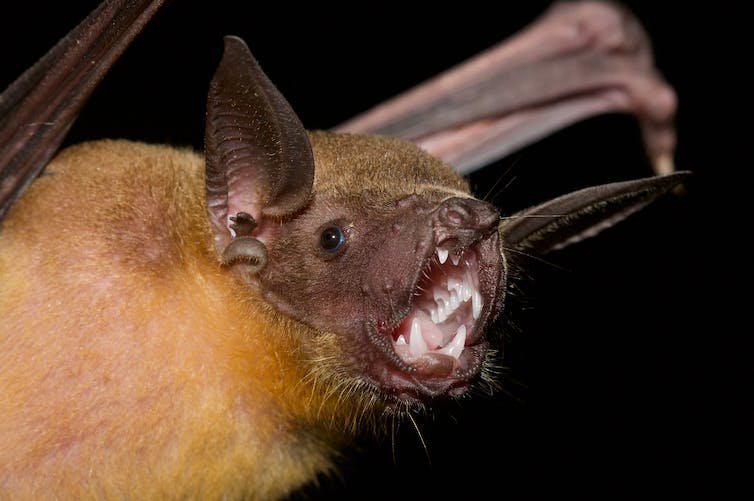In the cloud forests of South America, amid the constant cacophony of bird and insect noise, a deafening blare pierces through the background from time to time. Belonging to the loudest known bird, the white bellbird, Procnias albus, this sound would be painful to humans listening nearby and capable of causing immediate hearing damage from about a yard away.
Listen to the world’s loudest bird call.
Made exclusively by males serenading females, these vocalizations can reach peak levels of more than 120 decibels on the sound pressure level scale (dB SPL), which is equivalent to a jet aircraft taking off from 100 yards away. The female bellbird listens some distance from the male, presumably trading off being close enough to assess his quality as a mate without damaging her ears.
I study the hearing ability of animals and the sounds they make to communicate. A great number of calls exist throughout the animal kingdom – and many are used to attract mates or defend territories. Evolution has favored those able to make sounds efficiently. The louder and more focused the energy in the call and the closer in pitch it is to the intended listener’s optimal hearing range, the farther away a potential mate or rival will hear it.
Many large mammals, such as singing whales, roaring lions and rumbling elephants, produce loud low-pitched sounds that travel especially well through most habitats. Because of their petite physical size, small animals are not capable of making these far-reaching low-frequency sounds.
As a workaround, a number of small creatures have found ingenious ways to deliver their messages loudly, despite their size.
Ultrasonic calls
Human ears are most sensitive to the highest notes on a piano – about 4 kHz – a unit of measurement that is the physical metric for pitch. Anything above 20 kHz is considered ultrasonic – undetectable to human ears. But such sounds are not undetectable to all ears.

The greater bulldog bat’s ear is engineered for ultrasonic hearing.
Thomas Cuypers/flickr, CC BY-NC-ND
For example, the greater bulldog bat, Noctilio leporinus, can produce ultrasonic echolocation calls between 30 and 60 kHz when hunting prey and maneuvering during flight. These calls can also get incredibly loud – above 140 dB SPL.
Many other small mammals, including other bats, and even some primates such as tiny tarsiers, produce loud ultrasonic sounds humans can’t perceive. In part, these sounds can reach such volumes because their acoustic power is concentrated in a pure tone or single frequency.
Creating speakers
Insects are some of the smallest animals to produce loud sounds, chief among them the cicadas and the orthopterans, which include katydids, grasshoppers and crickets.
In North America, the robust conehead, Neoconocephalus robustus, a type of katydid, regularly surpasses 105 dB SPL. These…
